Analog Activities in a Digital World🌀🌱
All Roads Lead Back to The Artist’s Way—even baseball cards
Recently, my son inherited his dad’s massive childhood collection of baseball cards—a treasure trove of 80s and 90s sports legends mixed with players long forgotten by time—and he is utterly captivated by them.1
I’m talking hours of dedicated, engaged, focused attention poring over every card.
If you know you know just how big that is.
Together, my son and husband sort, organize, and trade the cards, memorizing names and analyzing stats. My husband weaves in nail-biting stories of iconic games and legendary players, slipping in lessons about teamwork, resilience, and perseverance. Their trips to card shops to find missing players for their team sets have become an eagerly anticipated and cherished weekend ritual.
What a seriously amazing thing this has turned into for a seven-year-old kid !
Beyond the hours of deeply focused attention and the adorable father-son bonding, I am totally struck by the tactile, physical nature of it all.
In a world dominated by screens, these tangible objects invite a kind of sensory mindfulness that feels truly precious—and I can’t help but worry it’s something that may become increasingly rare in my son’s lifetime.
The Artist’s Way Connection
Watching him dive into his baseball card collection got me thinking about the value of hands-on, offline, screen-free activities for kids and families in our increasingly digital world.
Naturally—because this is how my brain works—this train of thought led me back to The Artist’s Way.
How do baseball cards connect to Julia Cameron’s seminal 1992 creative recovery program, you ask? Good question. The link lies in a conceptual framework I first encountered during one of my (three) attempts at the program (none of which made it past Week 10, lol, BUT STILL): it’s the idea of engaging in tactile, creative, analog activities as a way of balancing inflow and outflow—in other words, carving out space for creation over consumption.

This concept is introduced during Week 4 of the 12-week program: the infamous reading deprivation week. The assignment is actually quite radical, especially when adjusted for today’s digital age. No books, no TV, no social media, no streaming, no news, no podcasts, no endless feeds, no texts, no emails.
In short, no external input of any kind (as much as possible, at least) for an entire week.
Are you intimidated yet?
The goal is to clear away outside noise, creating space for your own thoughts and ideas to surface. Without the constant inflow from other sources, you’re left with just yourself—and the creativity, curiosity, and insights that might otherwise be drowned out.
Julia Cameron writes:
“By emptying our lives of distraction, we are actually filling the well. Without distractions, we are once again thrust into the sensory world. If we monitor our inflow and keep it to a minimum, our reward will be a new outflow: our own art, our own thoughts and feelings.”
It’s an intense, uncomfortable, and daunting challenge—but one that’s deeply rewarding.
Now, whenever I feel overwhelmed by too much input—scrolling, streaming, watching, reading—I try to shift toward output: writing, creating, doing something hands-on. Even just a few hours—a slow morning or a quiet evening—spent doing something tactile is usually enough to reset.
I like to apply this framework to my family, too.
It feels so important to carve out time and space for activities that ground us in our bodies and senses. I hope this value sticks with my kids as they grow, becoming something they can carry with them into an ever-engulfing digital world.
I think that’s why these baseball cards struck me as so special. Watching my son sort, organize, and study them is about so much more than the cards themselves. It’s about the tactile, hands-on experience—one that sparks curiosity, connection, storytelling, mindfulness, patience, and discovery.
What could be better than that?!

Analog/Output Activities for Families
As I see it, an analog or output activity is hands-on, screen-free, and prioritizes active participation over passive consumption. These activities often lead to something meaningful—a tangible creation, a new skill, a shared experience, or simply a good, restorative feeling.
Here are a few simple ideas that have worked well for us. Both the adults and kids love them (important !!), and most are ideal for children ages 3 and up.
1. 100 to 300-Piece Puzzles:
In my pre-mom life, I regularly completed 1,000+ piece puzzles—a few each year, at least. But as you can imagine, that’s a bit harder to manage in a small two-bedroom apartment with sneaky little hands grabbing pieces or cheekily destroying hours of progress.
My hot tip? 100 to 300-piece puzzles.
They’re still challenging enough but much more suited to a small apartment and family life. They strike the perfect balance between effort and quick satisfaction, clearing my mind in a meditative way without overstaying their welcome on the dining table—or risking destruction before completion.
When my older son turned three, we started working on 100-piece puzzles together. He’d help sort matching shapes and colors, and before long, he discovered the joy of clicking the right piece into place. Over the years, we’ve graduated to 300-piece puzzles and even tackled a 500-piece one this past summer.
These smaller puzzles often feature brightly colored, kid-friendly designs, which I personally love—like the sweet ice cream truck pictured above.
Here are a few other 300-piece puzzles that I may or may not be buying as holiday gifts for myself my son:
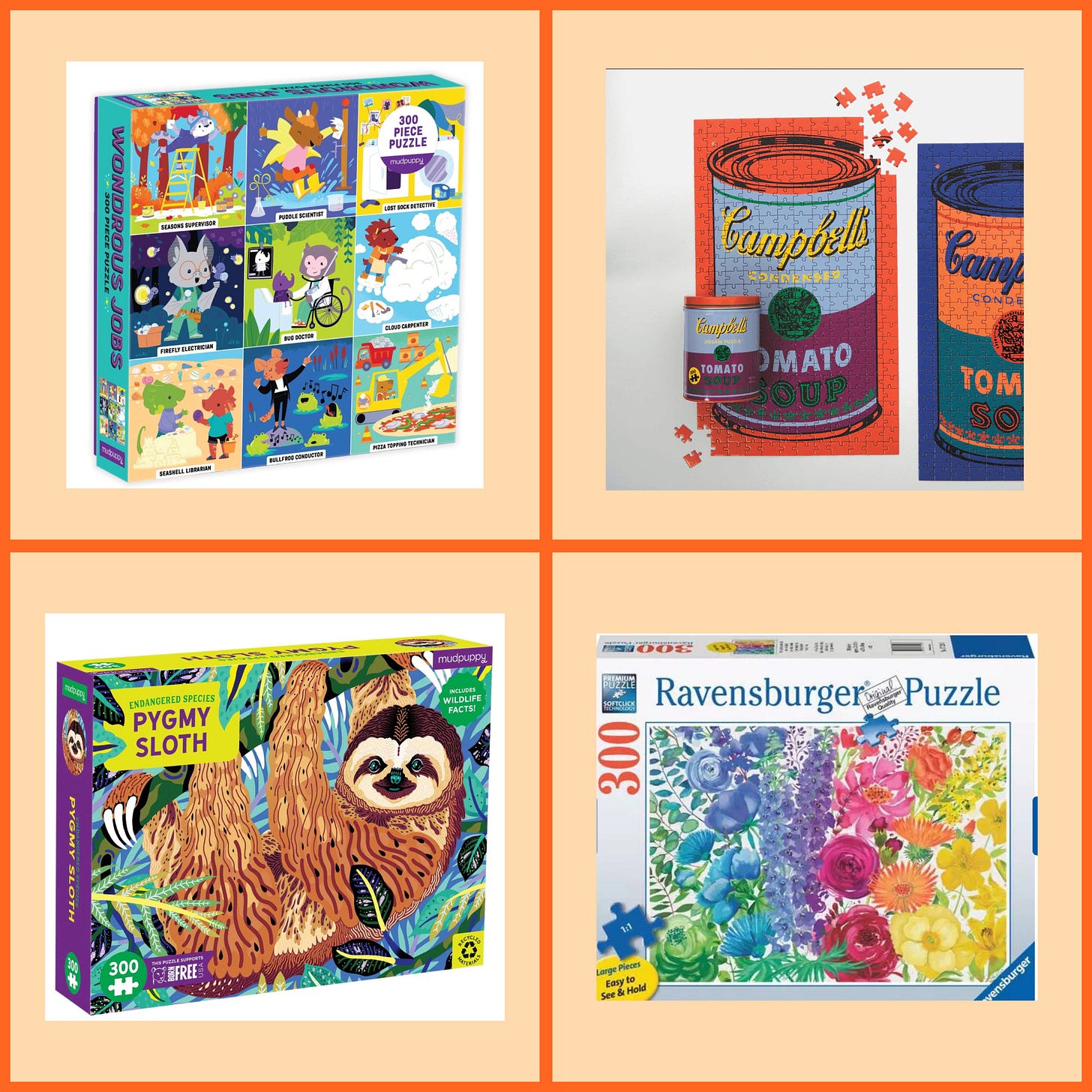
2. Collaborative art:
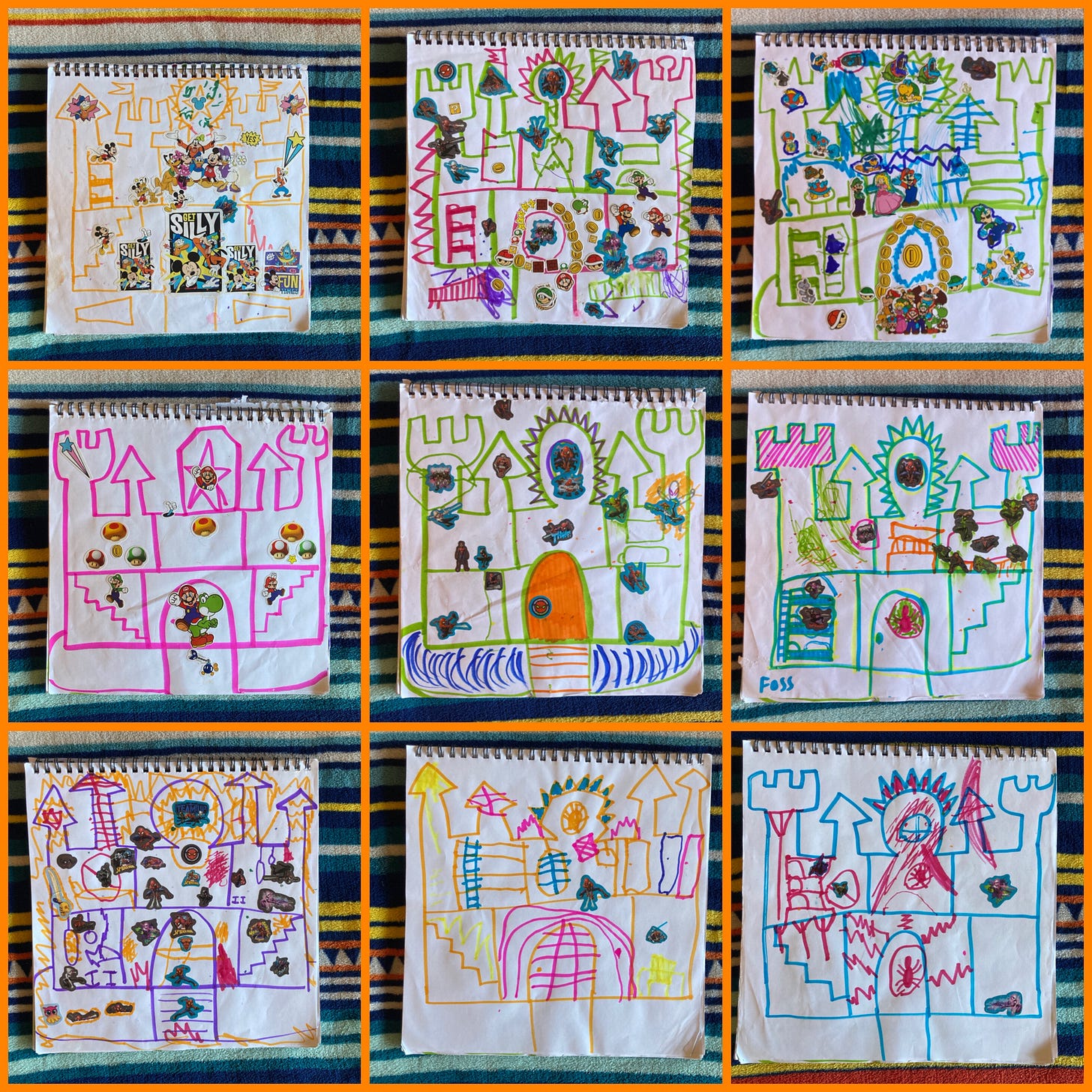
My son and I have filled countless notebooks with collaborative art. I’ll start with a very-amateur-I-promise-you outline—maybe a castle, a superhero’s body, a sportball scene, or simple landscape—and he’ll color it in, add stickers, or we’ll take turns building on it together.
We often do this in the car, passing the notebook back and forth over the passenger seat, each adding a few details before handing it back again.
It’s flexible, fun, and something I genuinely enjoy as much as he does. I often suggest it when he’s in the mood to play something I’m less enthusiastic about—like action figure battles or ninja/superhero pretend play (god help me with those). Thankfully, when I offer a cheerful “Want to draw with me instead?” he usually, happily, says yes.
Your art skills don’t need to be refined or elevated in any way, believe me. Just as you encourage your kiddo to draw the best they can, give yourself the same grace. It’s all about the process, not the product—though the end result, with all its amateur charm, can still turn out incredibly cool. (See above… right ??)
3. Treasure Hunting:

Baseball card collecting and thrifting/second-hand shopping are connected for me by the thrill of the slow, patient hunt for treasure. They’re about surprise, serendipity, and the joy of discovering something special (even if only to you) within the ordinary.
In our family, my son and husband handle the baseball card collecting, while I stick to thrifting. This past summer, I took my son with me for the first time, and to my absolute delight, he loved it. (It didn’t hurt that he scored multiple jerseys, Lionel Messi shorts, and a Captain America sweatshirt—all for under $20.) We’re now planning our next thrift adventure for an upcoming weekend soon.
I realize that shopping can often fall into the realm of “consumption,” but I see thrifting as something different. Sorting through racks of vintage clothes, shelves of used books, rows of vinyl records, or stacks of home goods invites curiosity and sparks imagination. Each item holds a sense of history and possibility: How could I style this lime-green mohair grandpa sweater? What meals were served on this full set of 1970s wedding china? Could that weird, amateur oil painting of a random family work in my living room?!
Thrifting is tactile and hands-on, engaging the senses with textures, colors, and designs. And bonus: it’s environmentally friendly and comparatively cheap—my ideal combo.
4. Air-Dry Clay:
Honestly, I’ve only tried this with my son once, but we’re both excited to do it again. One afternoon, we sat at the dining room table together, rolling, squeezing, and shaping the clay as we chatted. He made little figurines of hot dog people (sure, why not), and I made a small jewelry dish for my bedside table.
The fact that it broke within a week doesn’t even matter, I swear!
There’s just something so calming about the tactile experience of working with clay, and it’s such an open-ended activity—you can create anything from practical items to whimsical sculptures (see: hot dog people).
Here are a few images inspiring me for our next session:
5. LEGO Builds
My son is a LEGO obsessive, and it’s spread to me and my husband too.
It’s a classic, timeless activity for a reason—it’s hands-on, creative, and so, so satisfying. For me, a Virgo eldest daughter, I love a good instruction book and rules to follow—click by click, it gets closer and closer to the platonic ideal of engineering perfection.
I can go off script sometimes, too, but let’s be real—I usually end up building color-coordinated symmetrical pyramids. I like to keep it neat and classy. My son, on the other hand, goes wild with his creations, and I love sitting beside him, clicking and snapping away. I watch in awe at his problem-solving skills and patience, and it’s so clear he feels a real sense of accomplishment when he’s done.

Things we’ve learned over the years:
Extra base plates come in handy for flexibility and travel.
There are so many great LEGO idea books for inspiration (I always see some at the library!)
Bricks and Minifigs is a fantastic shop for used and unique pieces and sets.
In a world that constantly pulls us toward screens, these activities feel especially precious. They’re not just a way to unplug, they’re a way to reconnect—with our hands, our senses, our creativity, our own thoughts, and, most importantly, each other.
What analog activities are bringing you joy lately? I’d love to hear what you’re doing.
Until next time,
Danielle
All credit goes to my in-laws, who somehow managed to preserve a toy store’s worth of incredible 80s and 90s games, action figures, and memorabilia through multiple moves and over nearly four decades!






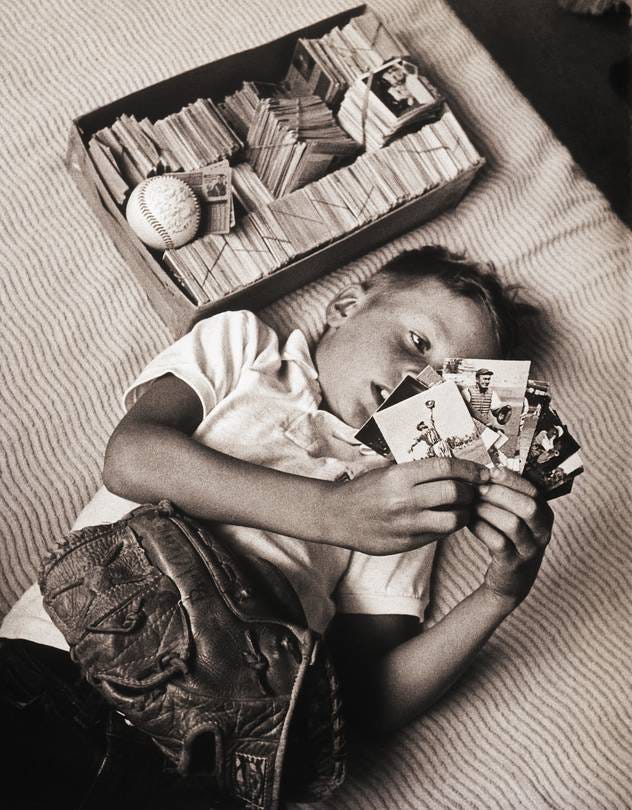
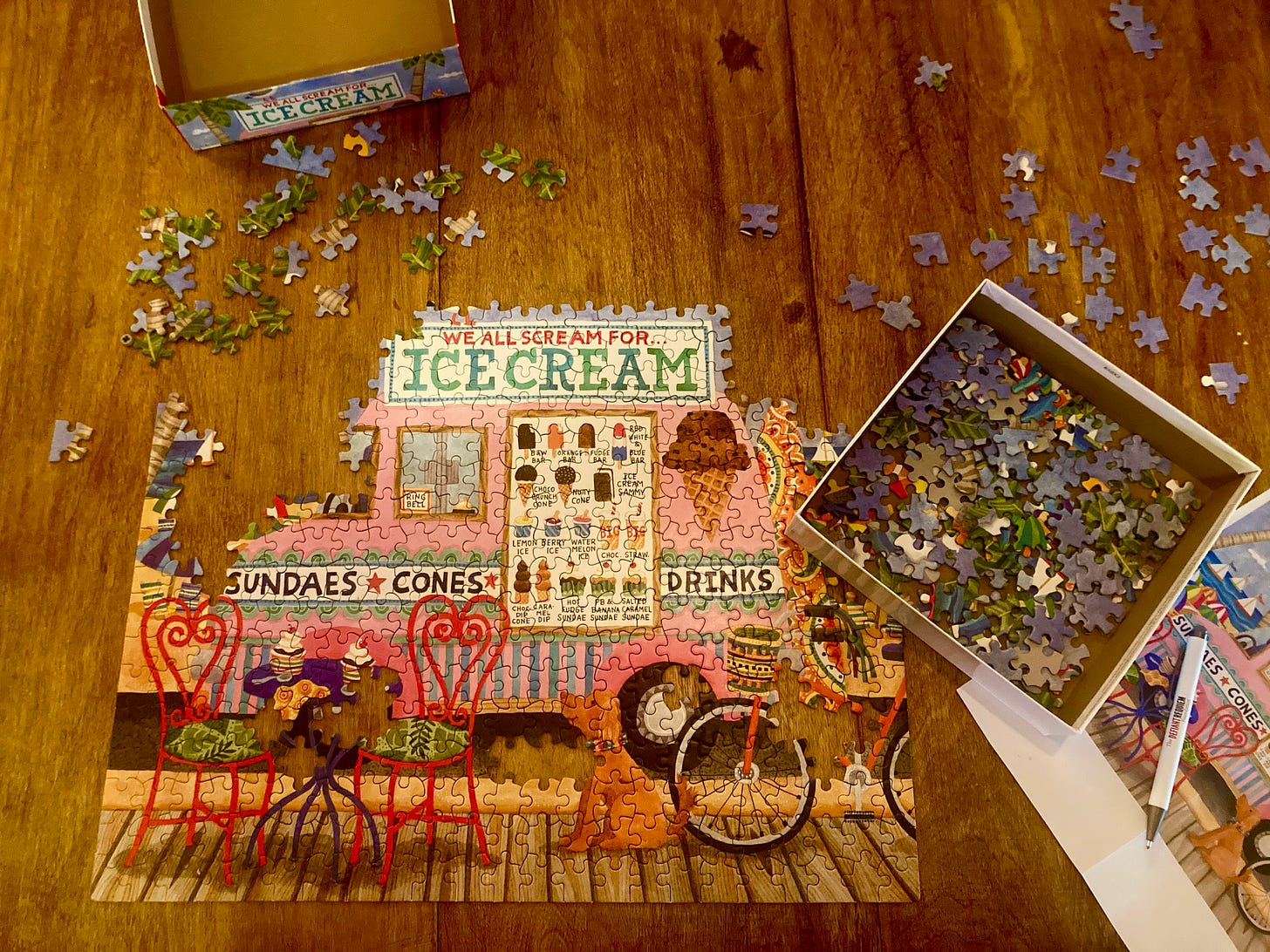

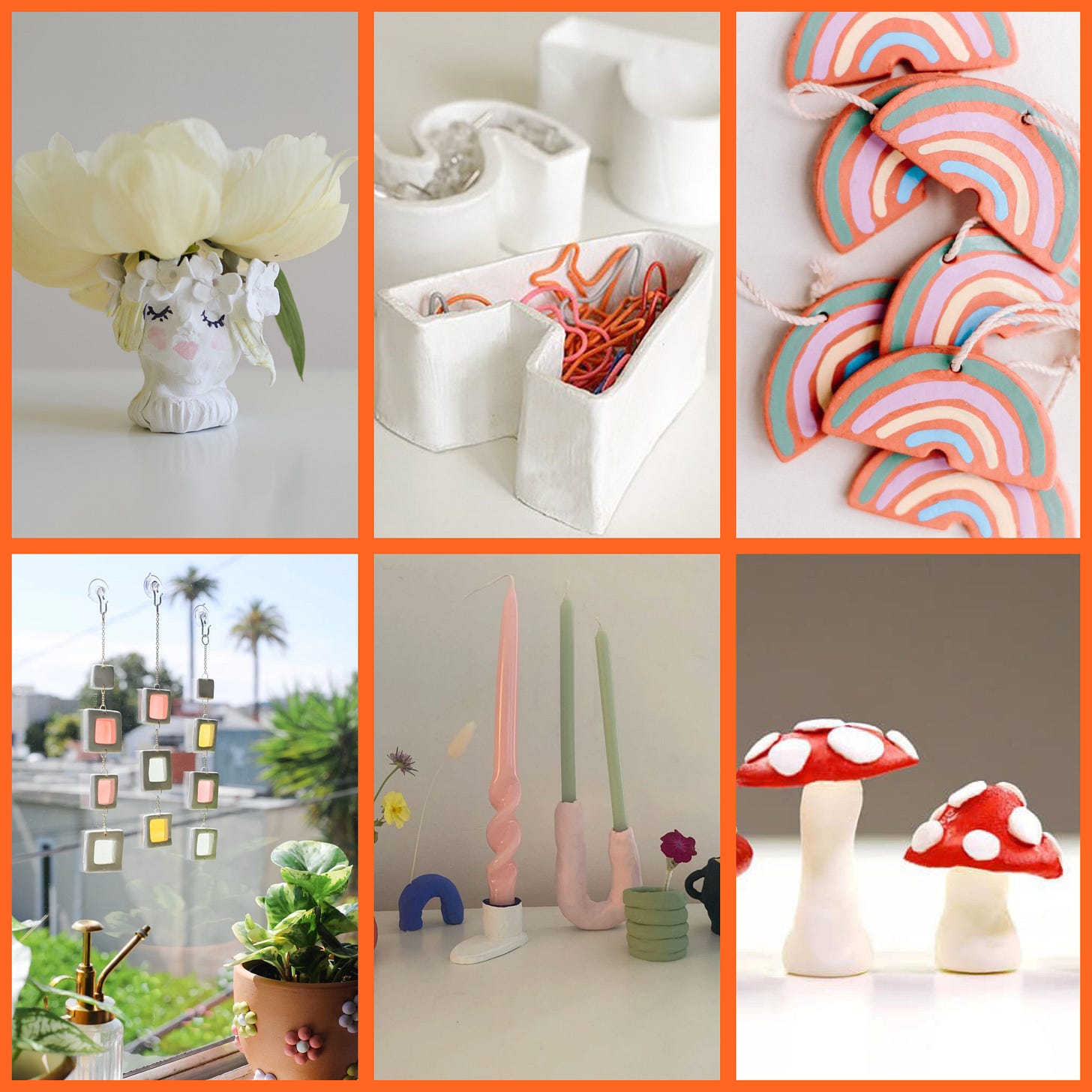
fantastic!!! and… you’re welcome!!! more to come!!!!😂❤️